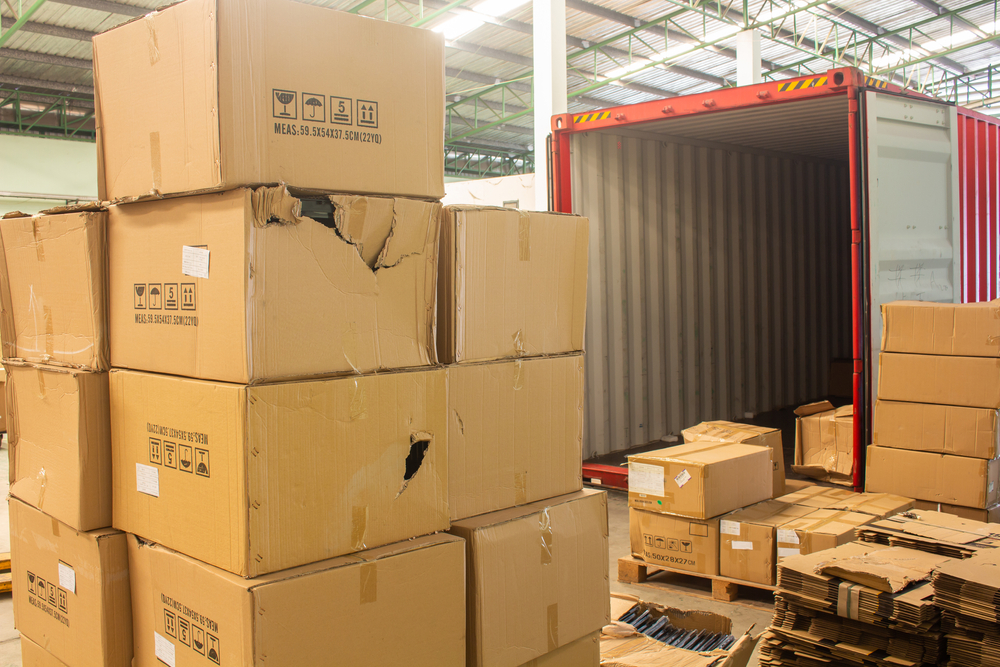Few things are more disappointing than receiving a damaged package. When in transit, there’s always a chance that a package will become damaged due to shippers, improper handling, exposure, and more.
Damaged items are a big pain point for merchants, as they are often outside their control and directly impact customer satisfaction. It can affect a business’s reputation and be costly to replace.
The cost of replacing damaged products includes the item itself and the shipping cost to send it back to the merchant, reshipment, and the cost of the unsellable inventory. While this can be a challenge, there are always to prevent damage and keep your customers satisfied with their delivery.
Common Packaging Problems
Improper Handling
Many individuals will handle your package as it gets from point A to B. Unfortunately, despite the presence of “Fragile” labels, boxes may get handled roughly.
Solution: Get Insurance. While there’s no way to prevent accidents completely, insurance can help. Many major carriers offer shipping insurance to allow the sender to file a claim if the package was damaged or lost.
Excessive Empty Space
Remember the phrase, ‘good things come in small packages’ when considering your shipping practices. Bigger boxes tend to create bigger problems.
If the container is a lot larger than the item packaged, it will likely bounce around inside and become damaged. Aside from increasing the probability of damage, larger boxes cost more to ship and create more waste.
Solution: Use the correct size box. The box should only be slightly larger than the item being shipped.
Lack of Cushioning Material
Paring with the point above, you want to limit the amount of space inside the container. Not every package will need robust filler like a pillow or airbags, but having some cushioning to protect the item can reduce damage.
The dunnage used depends on the kind of products you are shipping. Dunnage refers to packaging components like bubble wrap, packaging peanuts, kraft paper, blocks, etc., that help support and secure items in transit.
Solution: Use some type of dunnage to fill any remaining space between the product and the box so nothing can shift or move around.
Humidity or Water Damage
Temperature and weather can drastically affect the condition of packaging. From a box being left outside on a rainy day to excessive condensation in trailers, unexpected environmental factors can cause wrapping, molding, or corrosion.
Solution: Try using desiccants. Silica gel packets or another desiccant can help remove moisture and keep cargo direr. You might also want to revise your current packaging to see if it provides enough support.
Pests
Infestation is something to consider, especially if you are shipping consumable items. Generally, infestation happens during overseas shipment in large freight ships but can occur in any location where insects or animals are present.
Solution: Sturdier packaging. Wrapping items in plastic or using double-sided cardboard can offer additional protection from the elements and pests.
Additional Steps to Prevent Damaged Packaging
Do a Test Run
Say you are switching carriers or have a new shipping partner. You can do trial runs or test orders to see if the package arrives safely. If you are concerned about the condition of your shipment, it’s always better to send a trial package or two and see how it ends up at its destination.
Collect and Review Shipping Data
If you’re having issues with shipping, record every incident. Keep track of the type of damage, how it happened, and what steps were taken to prevent it from happening in the future.
Consider Accumulation
To prevent errors from happening in-house, accumulation systems act as a buffer to ensure production can continue even if there is an issue with the packaging machines.
Accumulation offers pressureless loop technology, which protects against collisions. Preventing products from knocking against one another significantly decreases damage to the product and labels. This is important for product safety, especially when it comes to delicate items like medical vials or tapered wine bottles.
While it’s impossible to prevent 100% of damages, you can aim to reduce the number of incidents. If you would like to discuss production line and packaging challenges, our experts are here to help.




